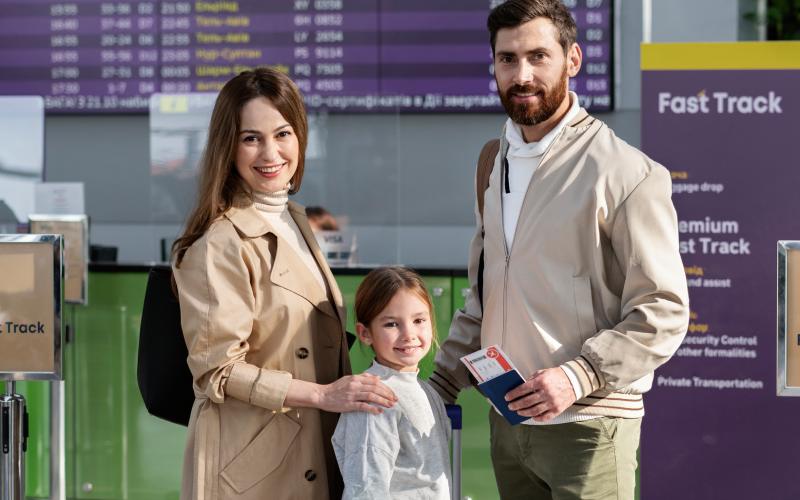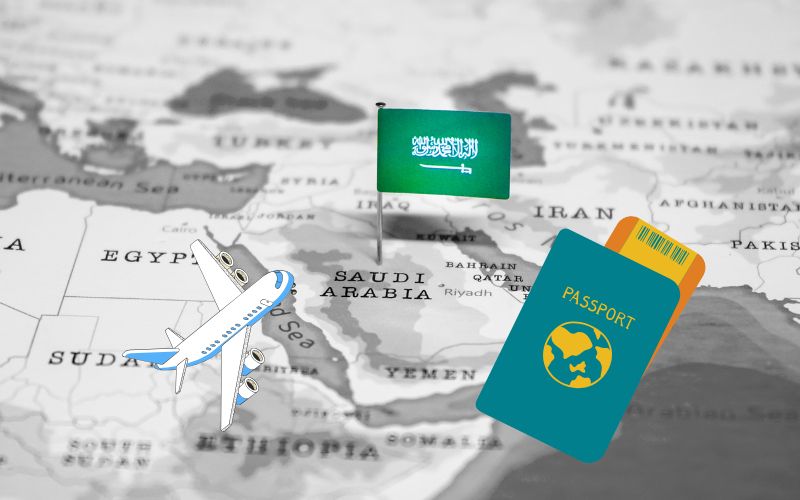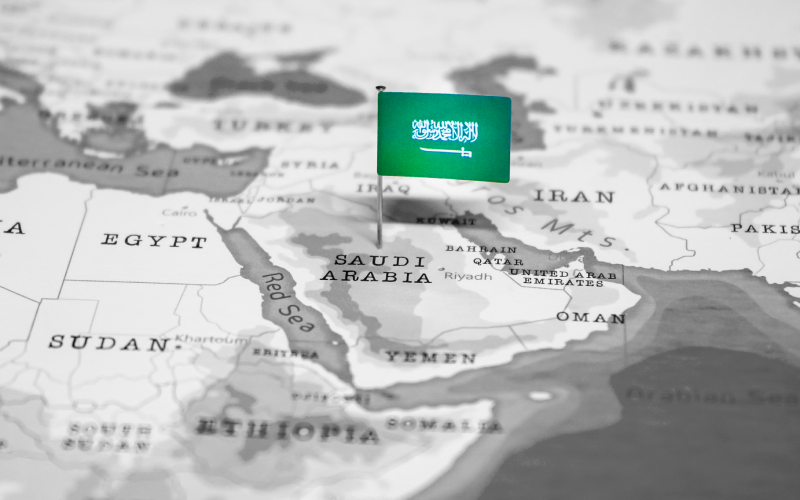Saudi Arabia has opened its doors to global travelers, offering multiple visa options for tourists. If you’re planning a trip, you might be wondering whether to apply for a Saudi Arabia eVisa or opt for a Saudi Visa on Arrival. Both Saudi visa types have their advantages, but which one suits your needs best? This guide helps you understand the differences, eligibility criteria, and processing times to help you make the right choice.
A. Understanding Saudi Arabia’s Visa
Before you apply for a Saudi visa, you must decide the type based on the purpose of travel, including tourist, business, and transit visas. Among them, the eVisa and Visa on Arrival are the most convenient options for short-term visitors. Let’s explore them in detail.
B. What is a Saudi Arabia eVisa?
A Saudi Arabia eVisa is an electronic travel authorization that allows tourists to apply online before their trip. Introduced to boost tourism, this visa enables eligible travelers to enter the country without visiting an embassy or consulate.
Here are the features to best understand the Saudi eVisa:
- Available to citizens of over 50 countries
- Multiple-entry visa with a validity of one year
- Allows a stay of up to 90 days per visit
- Can be used for tourism, Umrah (excluding Hajj), and leisure activities
- Requires online application and pre-approval before arrival
C. What is a Saudi Arabia Visa on Arrival?
A Saudi Visa on Arrival allows eligible travelers to obtain a visa at the airport upon landing in Saudi Arabia. This option removes the need for pre-application but may come with longer wait times at the immigration counter.
To easily understand the Saudi visa on arrival type, here are the top features:
- Available only to citizens of select countries
- Single-entry and multiple-entry options available
- Valid for up to 90 days per visit
- Requires passport, return ticket, and hotel booking confirmation
- Payment is made at the airport upon arrival
D. Must-Know Differences: eVisa vs. Visa on Arrival
- You need to apply Saudi evisa online before traveling. The process involves filling out an application form, uploading necessary documents, and making an online payment. Once approved, you receive the eVisa via email.
- You apply for the Saudi visa on arrival at the airport after landing in Saudi Arabia. Travelers must provide the required documents for Saudi visa, pay the visa fee at the counter, and wait for approval before proceeding to immigration.
- The Saudi Arabia eVisa process is paperless, as everything is submitted online. Travelers only need to print or show a digital copy of their approved visa upon arrival.
- The Visa on Arrival requires physical documents such as a passport, return ticket, hotel reservation, and sometimes proof of funds, which must be presented at the immigration counter for approval.
- Saudi Arabia eVisa is a pre-approved visa lowers the risk of being denied entry upon arrival. Since the process is completed in advance, travelers can enter with confidence.
- There’s a higher chance of rejection of Saudi visa on arrival at the airport if documents are incomplete or if the applicant does not meet the entry requirements. This can be risky for last-minute travelers.
Both visa types allow travelers to stay for up to 90 days per visit and are typically valid for multiple entries within a one-year period. However, it’s always best to check the latest Saudi travel policies before leaving.
E. Eligibility Criteria for eVisa and Visa on Arrival
- Saudi Arabia eVisa: Available to travelers from countries like the USA, UK, Canada, Australia, and Schengen countries. Applicants must have a valid passport and apply online in advance.
- Visa on Arrival: Only citizens of specific countries can apply upon arrival. Travelers must have a valid passport, return ticket, and proof of accommodation.

F. Processing Time: Which Visa is Faster?
The Saudi visa processing time varies for both types. Saudi Arabia eVisa is usually processed within 24 to 72 hours, making it a faster and stress-free option. While Visa on Arrival requires waiting in line at immigration, which can take anywhere from 30 minutes to a few hours.
G. Cost Comparison: eVisa vs. Visa on Arrival
For Saudi eVisa, fees vary depending on nationality. For example, Saudi visas for GCC residents are 750 AE including processing and insurance. The Saudi visa on arrival; Costs around, but rates may vary depending on currency exchange and processing fees at the airport.
H. Validity and Duration of Stay
In this case, both visa types allow a stay of up to 90 days per visit and are usually valid for multiple entries within one year. Travelers should check for any updates in visa policies before planning their trip.
I. Pros and Cons of Each Visa Type
Saudi Arabia eVisa Pros:
- Quick and hassle-free online application
- Pre-approved entry reduces risk of denial
- Faster immigration processing upon arrival
Saudi Arabia eVisa Cons:
- Must apply in advance
- Limited refund options if rejected
Saudi Visa on Arrival Pros:
- No need for pre-application
- Convenient for last-minute travelers
Saudi Visa on Arrival Cons:
- Risk of long wait times at the airport
- Higher chance of rejection upon arrival
J. Common Mistakes to Avoid When Applying
Mistakes When Applying for a Saudi Arabia eVisa
- Incorrect or Incomplete Information – Many applicants make mistakes while filling out their eVisa forms, such as misspelling names, incorrect passport numbers, or selecting the wrong nationality. These errors can lead to delays or rejection.
- Using an Expired or Soon-to-Expire Passport – Your passport must be valid for at least six months from your arrival date. If your passport is near expiration, your eVisa application may be denied.
- Not Checking Eligibility – The Saudi Arabia eVisa is only available to citizens of certain countries. Applying without verifying your country’s eligibility can result in wasted time and money.
- Skipping Travel Insurance Requirement – A mandatory insurance fee is included in the eVisa cost, and failure to acknowledge or pay this fee can lead to application rejection.
- Ignoring Processing Time – While the eVisa is generally approved within 24-72 hours, unexpected delays can occur. Applying too close to your departure date can disrupt your travel plans.
- Not Carrying a Copy of the eVisa – Some travelers assume a digital copy on their phone is enough. While this might be acceptable, carrying a printed copy ensures smoother entry in case of technical issues at immigration.
Mistakes When Applying for a Saudi Arabia Visa on Arrival
- Not Confirming Eligibility – The Visa on Arrival is not available to all nationalities. Assuming you can get one without checking official requirements may lead to denied entry.
- Arriving Without Required Documents – Immigration officers may ask for proof of a return ticket, hotel booking, and sufficient funds. Failing to present these documents can result in visa denial.
- Carrying Insufficient Cash or Wrong Payment Method – Some airports require visa fees to be paid in specific currencies or via credit/debit cards. Not having the right payment method can cause unnecessary delays.
- Long Waiting Times at Immigration – Many travelers don’t account for the extra time required to process a Visa on Arrival. During peak hours, waiting in long queues could significantly delay your entry.
- Risking Last-Minute Rejection – Unlike the eVisa, which is pre-approved, the Visa on Arrival is granted at the discretion of immigration officers. If your documents don’t meet requirements, you might be denied entry and forced to return home.
- Overlooking Visa Validity and Rules – Some travelers assume the Visa on Arrival grants the same validity as the eVisa. However, regulations may change, and overstaying can result in fines or future entry bans.
FAQs to Help You Decide Saudi Visa on Arrival vs evisa
Conclusion
Choosing between a Saudi Arabia eVisa and a Saudi Visa on Arrival depends on your travel preferences. If you prefer a smooth, pre-approved entry, the eVisa is ideal. However, if you’re making spontaneous travel plans and meet the eligibility criteria, the Visa on Arrival can be a convenient alternative.
Before traveling, always check the latest Saudi visa types and policies to ensure a hassle-free entry into the Kingdom.
Would you choose an eVisa or Visa on Arrival for your trip to Saudi Arabia? Let us know in the comments!
I’m an explorer and travel blogger who lives to discover the unseen beauty of the world. Travel is my passion and my everyday life.



